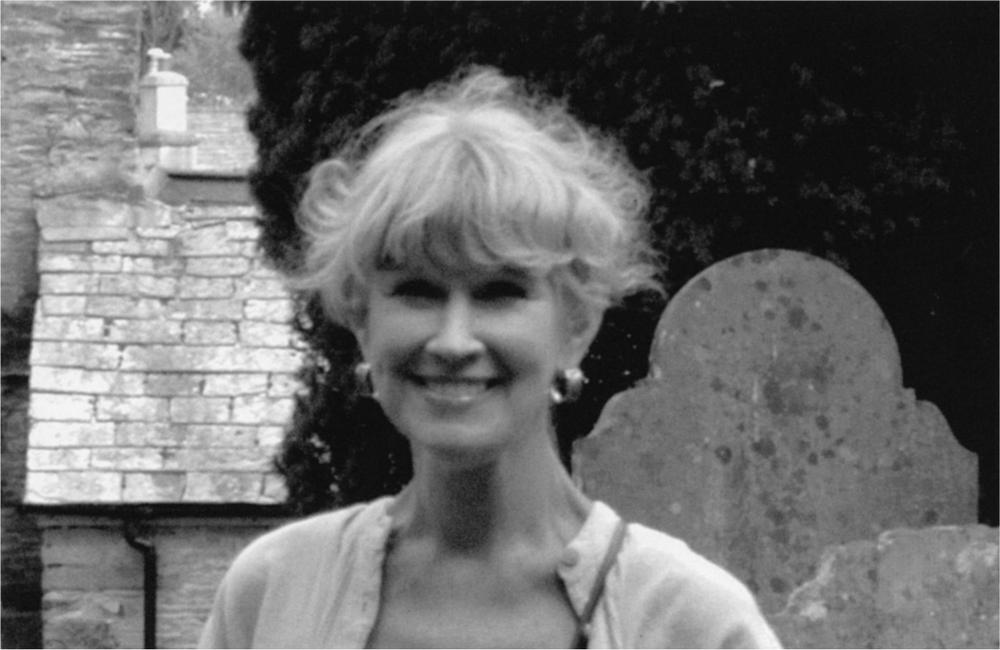Homage to Gaia (72 page)
Authors: James Lovelock


Plate 26.
Sandy at Altarnun, 1999
First published in 2000 by Oxford University Press
This second paperback edition published in 2014 by Souvenir Press Ltd
43 Great Russell Street, London WC1B 3PD
This ebook edition first published in 2014
All rights reserved © 2000, 2013 by J.E. Lovelock
The right of James Lovelock to be identified as author of this work has been asserted in accordance with Section 77 of the Copyright, Designs and Patents Act 1988
This ebook is copyright material and must not be copied, reproduced, transferred, distributed, leased, licensed or publicly performed or used in any way except as specifically permitted in writing by the publishers, as allowed under the terms and conditions under which it was purchased or as strictly permitted by applicable copyright law. Any unauthorised distribution or use of this text may be a direct infringement of the author’s and publisher’s rights, and those responsible may be liable in law accordingly
ISBN 9780285642560
Elaine Morgan
Why do humans differ in so many ways from other primates?
What do these differences tell us about human evolution?
The Aquatic Ape Hypothesis
is Elaine Morgan’s definitive summation of the theory, where she asks her readers to consider the only evolutionary hypothesis that explains our anatomical anomalies:
Why, unlike other primates, are we naked and covered with fat?
The only other mammals with these features are whales, seals and pachyderms.
Why do we have a descended larynx? Why are we able to alter our rate of breathing? Chimpanzees cannot do this, but walruses can.
“A revelatory read for anyone interested in human origins.”
BBC Wildlife
The answers, Elaine Morgan argues, rewrite human history and evolution. They point to one inescapable conclusion: millions of years ago our ancestors were trapped in a semiaquatic environment. This readable and meticulously argued book forces scientists to question long-held theories of human evolution, which now seem seriously flawed.
“Part feminist polemic, part evolutionary bombshell.”
‘The Guardian’
Elaine Morgan
The Descent of Woman
is a pioneering work, the first to argue for the equal role of women in human evolution. On its first publication in 1972 it was created an international debate and became a rallying-point for feminism, changing the terminology of anthropologists forever. Starting with her demolition of the Biblical myth that woman was an afterthought to the creation of man, Elaine Morgan rewrites human history and evolution.
“Part feminist polemic, part evolutionary bombshell.”
‘The Guardian’
This lively, informative book sets out to solve the riddle of our origins; its answer is controversial. Elaine Morgan has made the
Aquatic Ape Hypothesis
a plausible alternative to conventional theories of evolution and
The Descent of Woman
first set out an understanding of who humans are and where they came from.
“She is more scientific than Genesis, more up to date than Darwin, more fun than Ardrey, and she writes better than Desmond Morris.”
‘The Sunday Telegraph’
What our bodies tell us about human origins
Elaine Morgan
In this lively and controversial book Elaine Morgan presents a challenging interpretation to the question of human evolution. With brilliant logic she argues that our hominid ancestors began to evolve in response to an aquatic environment.
“Grippingly well written, argued clearly and with enormous intelligence… Morgan outlines the various evolutionary arguments concerning… the homo sapiens body and brilliantly demolishes 150 years of woolly theory.”
‘Literary Review’
Millions of years ago something happened that caused our ancestors to walk on two legs, to lose their fur, to develop larger brains and learn how to speak. Elaine Morgan discovers what this event was by studying the many incongruous flaws in the physiological make-up of humans. The human body is liable to suffer from obesity, lower back pain and acne. In support of her aquatic ape hypothesis she points out the flaws in our physiological make-up: the difficulties of erect bipedalism, our hairlessness and fat-layers, our preference for face to face sex and the way we breathe. Are these flaws a record of the history of the species, the ‘scars’ of evolution that are clues to earlier stages of evolution? Morgan establishes the origins of the evolutionary path that separated humans from other animals and questions the theories currently accepted by science. Did our ancestors adapt to an aquatic environment that subsequently dried out?
“It was one of the most outrageous, improbable evolutionary ideas ever proposed… now the idea… is becoming respectable.”
‘The Observer’
Elaine Morgan has made the
Aquatic Ape Hypothesis
a plausible alternative to conventional theories of evolution and in
The Scars of Evolution
she brings a real understanding of who humans are and where they came from.
